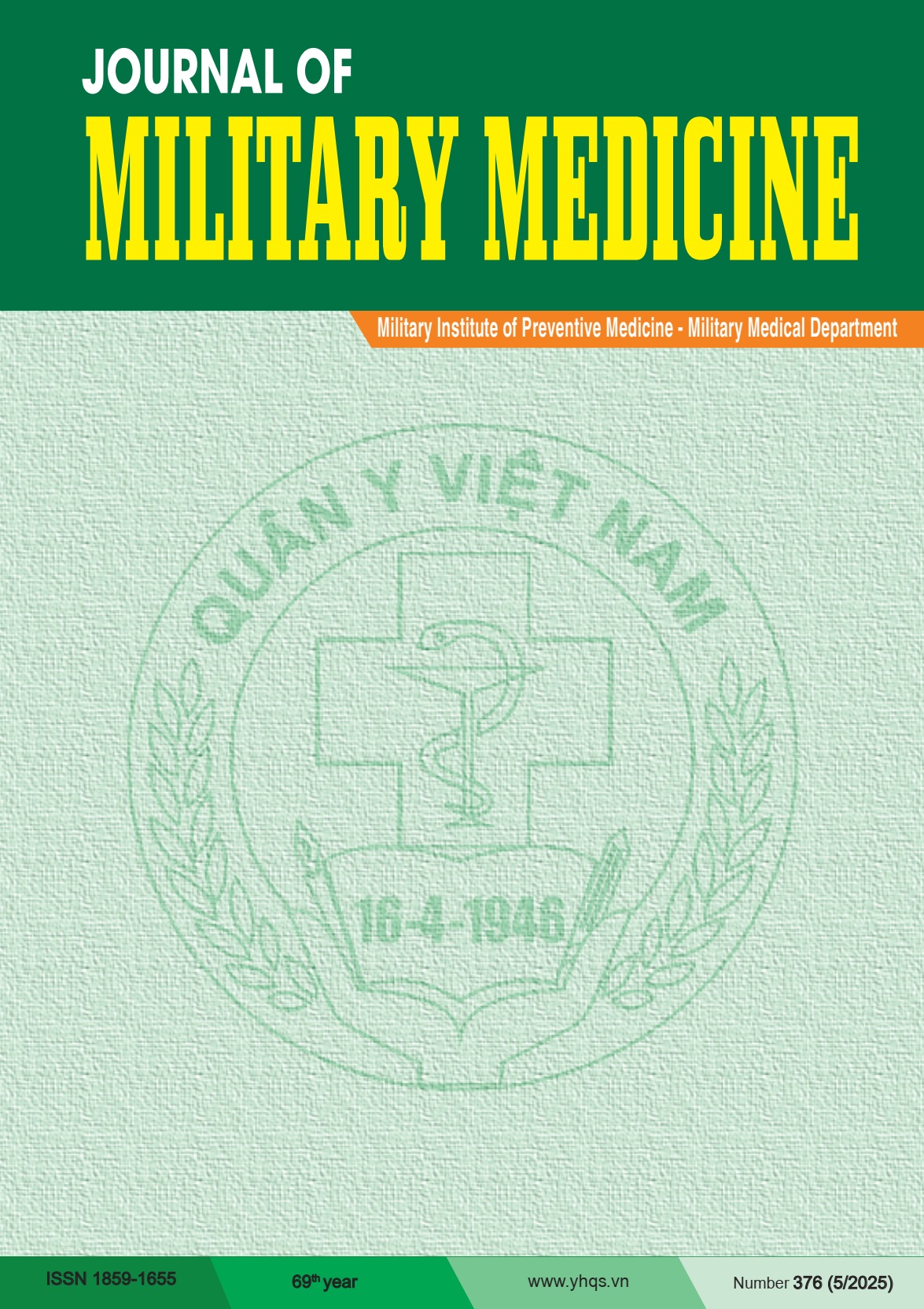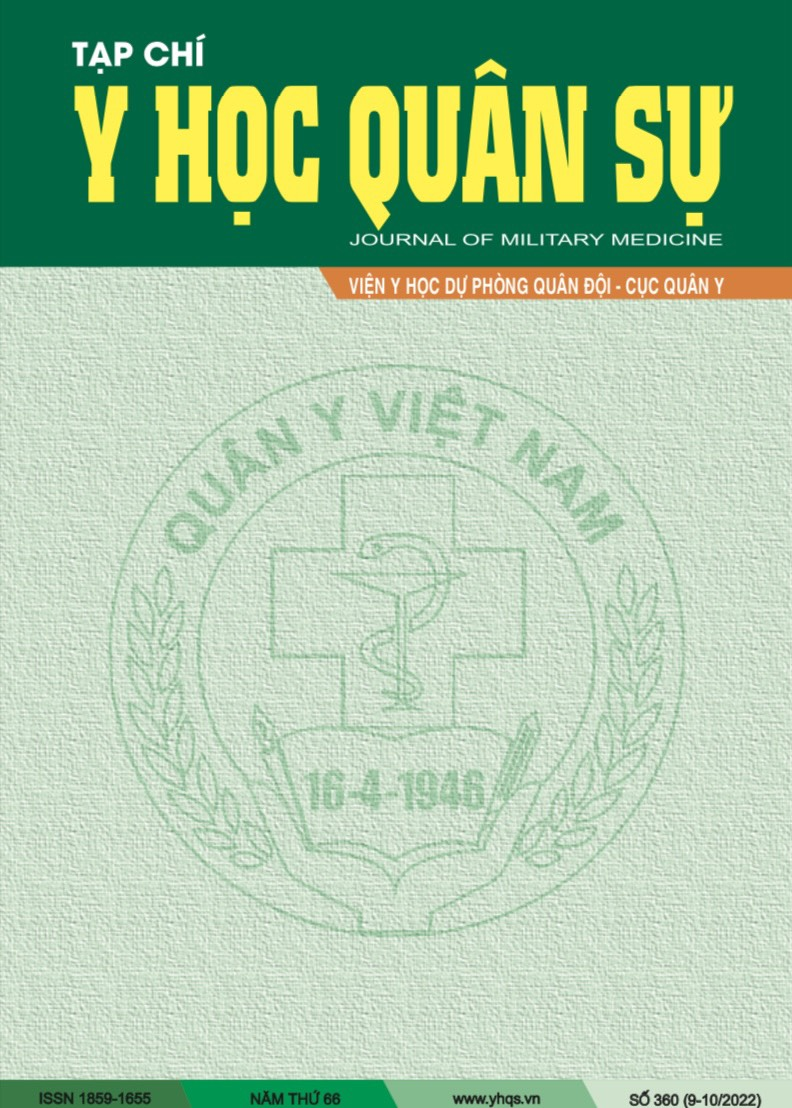THE EFFECTIVENESS OF COMBINED HYPERBARIC OXYGEN THERAPY WITH OTHER METHODS IN THE TREATMENT OF ISCHEMIC STROKE PATIENTS AT MILITARY HOSPITAL 103
DOI:
https://doi.org/10.59459/1859-1655/JMM.518Từ khóa:
Ischemic stroke, rehabilitation, hyperbaric oxygen therapyTóm tắt
Objectives: To evaluate the effectiveness of combined hyperbaric oxygen therapy with other methods in the treatment of ischemic stroke patients.
Subjects and methods: An uncontrolled interventional study conducted on 30 ischemic stroke patients treated at the Department of Rehabilitation, Military Hospital 103, from September 2023 to August 2024. Muscle strength was assessed using the MRC scale. Independence in activities of daily living was evaluated using the Barthel scale. Neurological impairment was assessed using the NIHSS scale.
Results: The proportion of patients with muscle strength grade 1 (40.0%) and grade 2 (40.0%) before treatment significantly decreased after treatment (to 20% and 20%, respectively), with a p-value < 0.05. Patients' independence in daily activities before treatment (100% dependent; of which 40.0% were completely dependent, 60.0% partially dependent) showed statistically significant improvement. After treatment, no patients remained completely dependent; 66.7% were still partially dependent, 20% were independent, and 13.3% were fully independent (p < 0.05). The mean NIHSS score significantly decreased from 6.98 ± 2.12 before treatment to 4.23 ± 0.89 after treatment (p < 0.05).
Conclusion: There was a positive improvement in muscle strength, daily activity function, and cognitive function according to the NIHSS in ischemic stroke patients receiving adjunctive hyperbaric oxygen therapy.
Tài liệu tham khảo
1. America Heart Association (2008). Heart disease and stroke statiscs, update 2008. Dallas, AHA, p. 145-172, Published online.
2. WHO (2020). Disease burden and mortality estimates, WHO, Accessed November 9.
3. Ministry of health (2014). Joint annual health review 2013: strengthening prevention and control of non-communicable diseases.
4. Chopp M,Li Y (2012). “Stimulation of neuroplasticity and functional recovery after stroke: Pharmacological therapy and cell therapy”. Journal of clinical medicine and pharmacy, 108(7), 5-9.
5. Londahl M, Katzman P, Nilsson A, Hammarlund C (2010). “Hyperbaric oxygen therapy facilitates healing of chronic foot ulcrers in patients with diabetes”. Diabetes care, 2010; 33: pp. 998-1003.
6. Mahoney F.I, Barthel D.W (1965). “Functional evaluation: The Barthel Index”. Md State Med J. 1965;14:61-65.
7. Kwah LK, Diong JJJop (2014). National institutes of health stroke scale (NIHSS).
8. Duong V.H. (2017). Clinical characteristics and cranial computed tomography findings in ischemic stroke patients before and after hyperbaric oxygen therapy at the Institute of Marine Medicine. 2016-2017.
9. Hong L.T. (2017). Clinical characteristics, paraclinical findings, and treatment outcomes of acute ischemic stroke with hyperbaric oxygen therapy at the Institute of Marine Medicine.
10. Chen-Yu Chen et al (2018). “Increased circulating endothelial progenitor cells and improved short-term outcomes in acute non-cardioembolic stroke after hyperbaric oxygen therapy”. J Transl Med, 2018; 16(1). doi:10.1186/ s12967-018-1629.
11. Huynh V.V. (2009). Study on hyperbaric oxygen therapy in ischemic stroke patients. [Master's thesis in Medicine]. Vietnam Military Medical University.
Tải xuống
Đã Xuất bản
Cách trích dẫn
Số
Chuyên mục
Chấp nhận đăng 30-08-2024
Ngày xuất bản 21-05-2025



